In the digital age, where boundless streams of information can be acquired and distributed with little more than an internet connection, it has become more and more important to practice vigilance and cast an analytical eye upon the sources that tell us what is going on in the world and how to view it. “Fake News” has become a watchword for the weary travelers of social media. We tend to think of it as a modern concept; something that has arisen because of Facebook and Twitter. In truth, it has always existed, in some form or another. The people of the past may not have enjoyed the same ease in promulgating their ideas, but that doesn’t mean we should dismiss their motivating factors for embellishment, misinformation, or downright lying.
When we consider the documents of the past, we have a tendency to exalt them. In addition to being old and rare, they offer a window through the mists of time, giving us a picture of what life was like before we came along. The problem is that picture is usually colored by someone else’s perspective, and it is rarely ever free from bias. Trained historians are taught to see through these distortions, but they aren’t always successful. Oftentimes the intention is noble, but just as with the chroniclers of the day, historians can have their own agendas. Additionally, myths can become so entrenched as accepted “facts” they can be hard to uproot, even with the most diligent gardener. This is what has happened with Jane Boleyn. Somewhere along the line, mistruths about her life became gospel, repeated time and again over the centuries.
Jane’s name has become synonymous with villainy. In nearly every book or movie/television show she appears in, she is shown as a shrew – the evil architect of the downfall of two queens and her husband. She is a caricature, a bizarro version of her true self. In an effort to try to release her from the bonds of her unfair depictions, I want to examine some myths that have grown up around Jane, why they may have come about and whether the source was partisan or pushing a narrative.
Jane confessed to giving false testimony on the scaffold
This is probably one of the most prevalent myths about Jane and the most easily disproved thanks to a letter written by a London merchant on the day after her execution. On February 15, 1542 a man named Ottwell Johnson wrote to his brother at Calais describing the extraordinary scene he witnessed the day before, at the execution of the queen and her lady. He says: I see the Quene and the Lady Retcheford suffer with the Tower the day following, whos sowles (I doubt not) be with God, for thay made the moost godley and christyan’s end, that ever was hard tell of (I thinke) sins the worlds creation; uttering thayer lively faeth in the blode of Christe onely, and with goodly words and stedfast countenances thay desired all christen people to take regard unto thayer worthy and just punishment with death for thayer offences, agenst God heinously from thayer youth upward, in breaking all his commandements, and also agenst the king’s royall Majesty very daugereriously; wherfor thay being justly condemned (as thay sayed) by the Lawes of the Realme and Parlement, to dye, require the people (I say) to take example at them, for amendement of thayer ungodly lyves, and gladly to obey the King in all things, for whos preservation thay did hartely pray; and willed all people so to do: commending thayer sowles to God, and earnestly calling for mercy upon him: whom I besieche to geve us grace with suche faeth, hope, and charite at our departing owt of this miserable world, to come to the fruition of his godhed in joy everlasting. Amen.
From this eye-witness testimony, we can prove with certainty that the final words Jane uttered had nothing to George’s death or any assumed role in it. This speech is boilerplate almost to the letter. As odd as it may seem to us today, it was customary for those on the scaffold to take on a penitent tone, conceding that they had offended both God and the monarch and thus deserved their fate. Not only were they attempting to save their surviving family members any additional punishment, they were also following a prescribed ritual of confessing their manifold faults and making a good end.
From the moment of birth, the men and women of the 16th century were raised to believe that they were all sinners in the eyes of God. Voicing this belief on the scaffold was instinctual and put them one step closer to Heaven. There is absolutely no reason to assume that Jane’s confession of living an ungodly life was code for giving false testimony. She was simply stating her inherent sinful nature and commending her soul to God’s care. Ottwell Johnson’s letter is a reliable source, not just because he saw the executions with his own eyes, but because there is no obvious agenda. He was a merchant, unconnected to anyone who may have had an interest in exonerating either of the condemned. His letter was to his brother, informing him of the news of the day. There was no religious or political bent, nor any reason to suspect he was repeating anything other than what he saw.
But George Wyatt/Lord Herbert of Cherbury/Gilbert Burnett said…
Yes…all three of these “historians” claimed that Jane hated George Boleyn and gave testimony that he committed incest with his sister, but it is extremely important to take a deeper look at the veracity of their sources and their motivations for reporting this myth. Wyatt, grandson of the man imprisoned alongside Anne and George, seems to be the originator of this accusation. In his book, The Life of Anne Boleyn, he calls Jane ‘wicked wife, accuser of her own husband, even to the seeking of his blood’, but he gives no evidence to back up this claim. Upon closer inspection, it is revealed that his work was formed based upon legends passed down in his family. He does include some recollections from one of Anne Boleyn’s maids, Lady Zouche, but by the time of his writing she was well into her seventies and not a reliable witness – I say this not because of her age, but because there are several other things she got wrong. At this point, nearly fifty years had passed since the events and collective memory had been tainted by Jane’s involvement in Katherine Howard’s fall. No one questioned Wyatt’s accusations because it was so easy to believe it of the disgraced lady.
In The Life of Anne Boleyn, Jane serves as the perfect scapegoat. Commissioned by the Archbishop of Canterbury, the work was intended as a response to the Catholic propaganda seeping out of the continent. It is something of a morality tale and seeks to portray Anne as a Protestant martyr. With Queen Elizabeth still on the throne and proclaiming her proud Tudor lineage, it would have been in very poor taste for Wyatt to place the blame of Anne’s death where it rightly belonged. Elizabeth would have never countenanced such a charge against her father. As a Catholic with close ties to the late Queen Mary and aunt to one of the leading exiled recusants, Jane was an easy target, and her involvement with Katherine Howard only made it that much easier to pin the blame upon her. Wyatt’s charges against Jane were embraced and seized upon by the printer commissioned to publish later editions of John Foxe’s Actes and Monuments. Though Foxe himself never mentioned Jane in the original work, the printer saw fit to castigate her in a marginal note. It should come as no surprise that the printer was an ardent Protestant with ties to William Cecil.
This initial biography of Anne appears to have also inspired the later works of Lord Herbert of Cherbury and Gilbert Burnet. However, they are not to be absolved of their shoddy research. Had they looked to contemporary sources, like the letter written by John Husee – the London contact for the Lisle family – or the statement from Justice John Spelman – a judge reporting on the trials in 1536 – they would have discovered that the witnesses procured against Anne and George were the Countess of Worcester, Lady Bridget Wingfield, and Nan Cobham. There is not a single contemporary record that names Jane Boleyn. In fact, we don’t even know for certain she was interrogated. It has been suggested that Lord Herbert was working from a lost chronicle written during Henry VIII’s reign, but for this particular assertion, he references his own book…which would be humorous, if it wasn’t so frustrating. Herbert may very well have used a contemporary journal now lost to time, but there is no way of vetting its accuracy without knowing what information the journal contained. As an aside, Burnett’s work was yet another piece of Protestant propaganda and so falls under the same cloud of suspicion that Wyatt’s book does.
It has been claimed that Lord Herbert and Burnet’s use of a journal kept by Anthony Anthony, surveyor of the ordnance in the Tower, proves their accusations against Jane. While it is true the journal has been lost, we can thank the president of Corpus Christi College, Oxford, for taking such diligent notes in his study of it that we can recreate the pertinent passages. Looking at the transcripts, Jane’s name is utterly absent from his reports on the trial. Stow, in crafting his Annals of the English, also used Anthony’s journal as a resource, and Jane is mentioned nowhere in the work. Had the charges occurred in Anthony’s journal, surely it would have been repeated in Stow’s.
And what of other works? Jane is exonerated in the chronicles of Edward Hall, Raphael Holinshead and William Camden.
The Torments of Marriage and Metrical Visions
There are two other sources that have been used to slander Lady Rochford’s reputation over the centuries, but these works have been largely misinterpreted or outright twisted to fit a false narrative.
The first is a manuscript written by Jehan Le Fevre called The Lamentations de Matheolus et Le Livre de Leesce… more commonly known as the Torments of Marriage and the Book of Gladness. This is a bound manuscript once owned by George Boleyn and now housed in the British Library. Assumed to be a wedding gift upon George’s marriage, the book originally belonged to Thomas Wyatt and his commentary is still written all over the inside covers. Historian Retha Warnicke, who set forth the controversial theory that the men charged with Anne died because of their homosexual relationships, based her idea that the Boleyn marriage was a deeply unhappy one on the existence of this manuscript – because the translation is of a poem lamenting the torment of marriage and the innate changeability of women, then surely it was meant as a commentary on George and Jane’s marriage. This claim has, of course, been repeated over the ensuing years by other historians and is now firmly entrenched as a generally accepted “fact.” The problem is that there is more to the manuscript than Warnicke and the rest would have you believe.
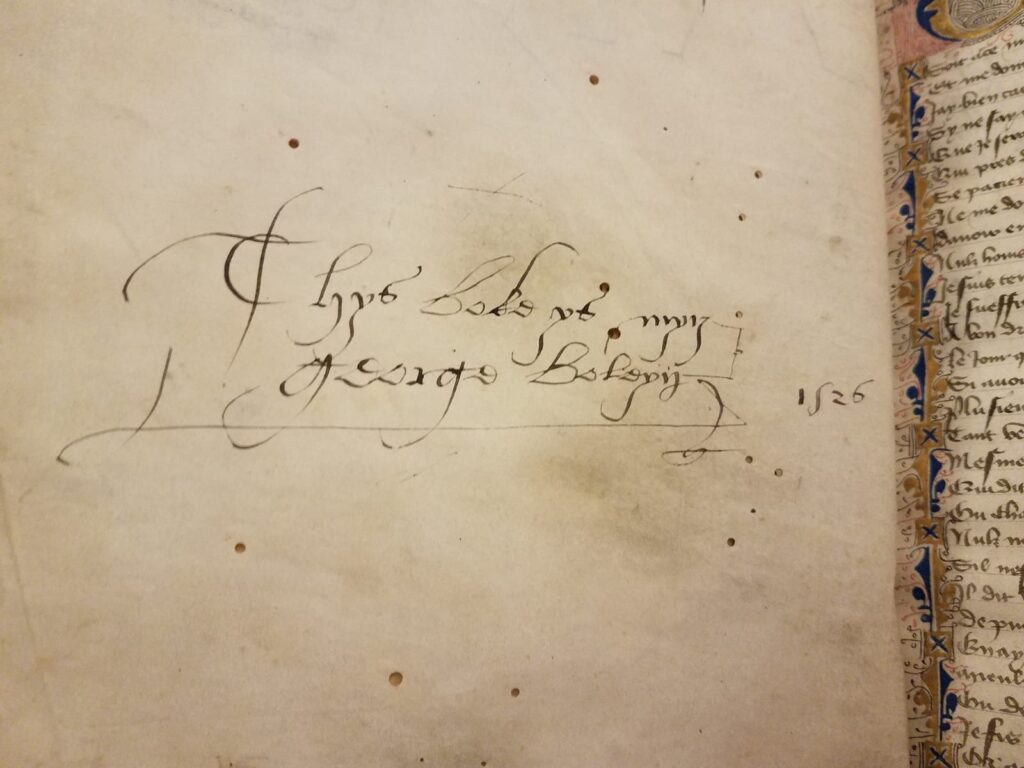
George Boleyn’s signature from his copy of The Lamentations de Matheolus et Le Livre de Leesce by Jehan Le Fevre, British Library. (© Adrienne Dillard)
In truth, the manuscript is made up of two volumes: the translation of the poem and LeFevre’s response to it. Far from agreeing with the author of the poem, LeFevre refutes his charges and extolls the virtues of both marriage, and women. His arguments are rather feminist in nature and contradict the lamentations. Wyatt’s comments in the manuscript further illuminate his intention in gifting George the work. He inscribed: my listeners, note well this point, that the new quashes the old way of thought. Suffering in his marriage, perhaps the manuscript was meant to serve as a warning to his dear friend: your marriage can be glad or full of misery.
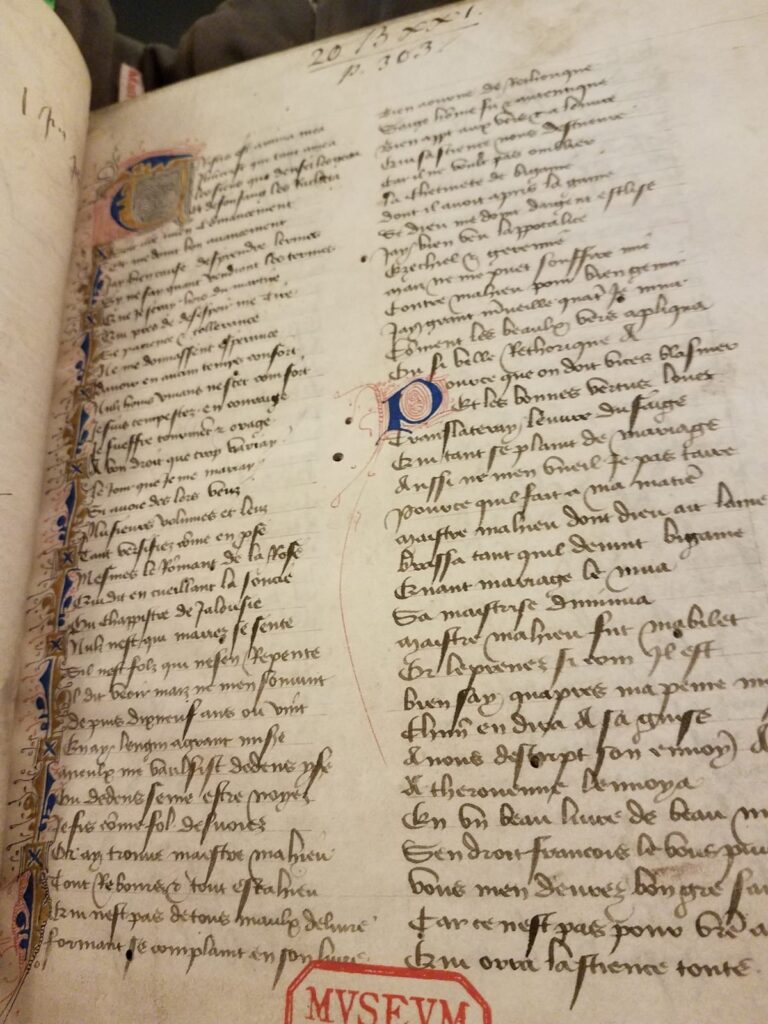
The Lamentations de Matheolus et Le Livre de Leesce by Jehan Le Fevre, British Library. (© Adrienne Dillard)
The second work is yet another poem, Metrical Visions, written by Cardinal Wolsey’s faithful servant, George Cavendish. From the outset, it is obvious that Cavendish was biased. He hated the Boleyns and blamed them for Wolsey’s fall. If we look further, it becomes clear that the poem was allegorical and not meant to be taken at face-value. Visions is an excellent example of the morality tales so popular during the Tudor period. Poems like these were written to demonstrate the dangers of falling into sin and vice. They were intended to inspire the readers to godly behavior and respect for the law. Cavendish hammers these points home. In Visions, he condemns vanity and riches, lamenting the loss of chivalry. He blames wealth, ambition, and avarice for the downfall of the characters populating his work and each is used to illustrate a particular sin: George Boleyn represents carnal sin, Henry Norris ambition, Weston unchecked lust, Brereton malice, and Smeaton presumption. Jane Boleyn represents dishonesty and infidelity. Knowing her ultimate fate, it makes sense that Cavendish would use her in this way. It was she who helped Catherine Howard in her extramarital liaisons, she who hid the affair. But again, Cavendish’s intention is allegorical. He uses the figures of people he knew to represent abstract or spiritual meanings.
Conclusion
While it may be tempting to buy into the traditional version of Jane Boleyn as a vindictive troublemaker bent upon destroying all and sundry, a closer look at the sources casts a shadow of doubt upon that inaccurate portrayal. The examples I have presented here are just a small sampling of the many myths that persist about the ill-fated Lady Rochford. Though many of the conclusions these sources draw about the lady can be refuted, the works as a whole need not be dismissed. They provide value in other ways, illuminating the prevalence of propaganda in the ensuing centuries and the power various religious sects wielded in influencing public perception and acceptable human behavior. They also teach modern audiences how to recognize the same tactics in our own purveyors of information. Whether it is outwardly evident or not, we face inherent bias every time we click on an article or share the latest viral video.
By Adrienne Dillard
Visit Adrienne’s official website
Listen to episode 26 of Talking Tudors, featuring Adrienne Dillard.
Join the Talking Tudors patron family before the end of May and you’ll be automatically entered into the draw to win Anne Boleyn’s Moost Happi portrait pendant in bronze, made by the ever-talented Lucy Churchill. A huge thank you to Lucy for sponsoring this incredible prize. Go on, join the family!
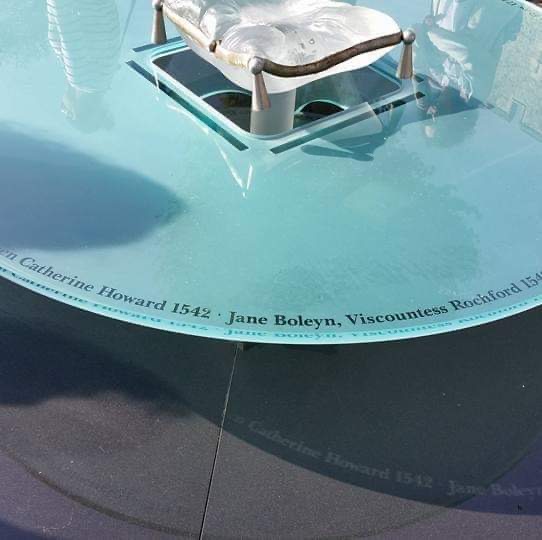
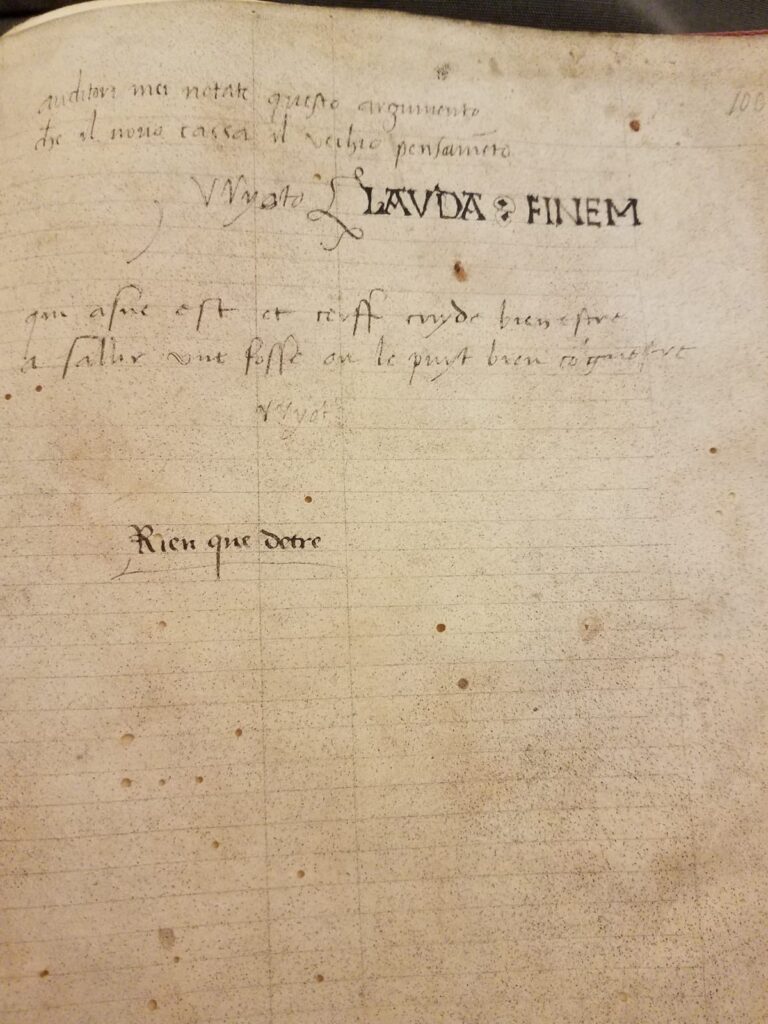

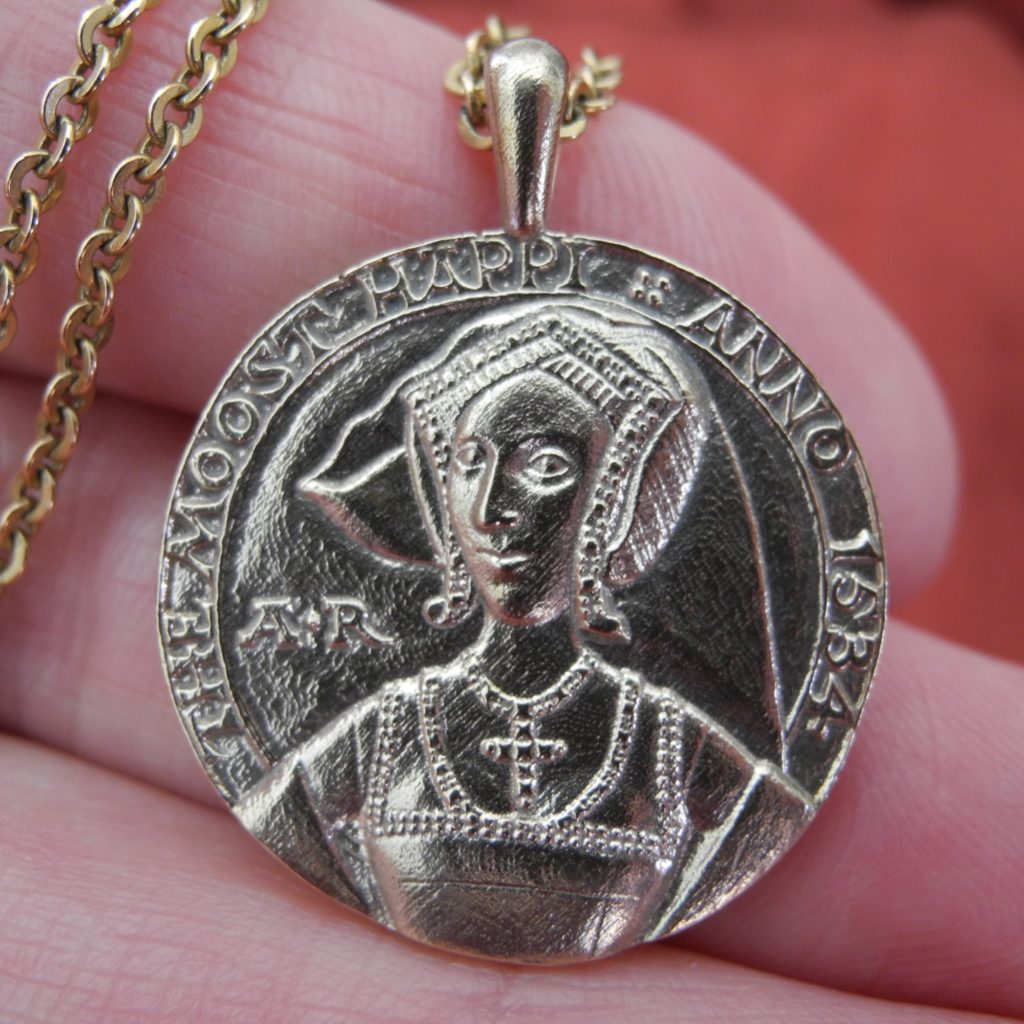
















What an excellent article! Clearly and persuasively written, it offers well-illustrated points which allow the reader to question previously assumed conclusions. Kudos, Adrienne! You just might have a career awaiting as an op-ed writer! In the meantime, it’s just sad to think about how significantly a person’s reputation can be tainted by certain writings or initial views. It was Jane’s sad fate that she was ‘commanded’ to assist the equally ill-fated Catherine Howard to follow her desires. Both of them women who were no match for the turbulent, unforgiving milieu that was the Tudor Court under a simmering Henry VIII. Thank you for such a great article!
I greatly enjoyed reading this. Thank you Adrienne Dillard. I so appreciate the accountability of those, like yourself, who have truly researched the “suspects” in Anne’s periphery and those who have kept her history in perspective, as well. You have always distinguished yourself as a discerning historian in the times I have seen you interviewed and I enjoyed this detailed article. Sometimes I wish there could be a “re-trial” in the form of a play for defendants like Anne and Jane and we could have you or someone play Anne’s/Jane’s lawyer and they would be released from their charges by pure fact alone (i.e. what you have laid out here for Jane and things like Anne was absent from the castles where she supposedly committed adultery, etc). I greatly appreciate Natalie and others who create forums for these discussions and I’ve been enjoying all of those Natalie has interviewed or posted for “All Things Anne Boleyn”. Thank you all!
Great article, thank you! I am really fascinated with Jane Boleyn, and I wish more was known. I loved Julia Fox’s book. I really, really loved The Raven’s Widow, it is my favorite historical novel. Thanks again. Michelle t